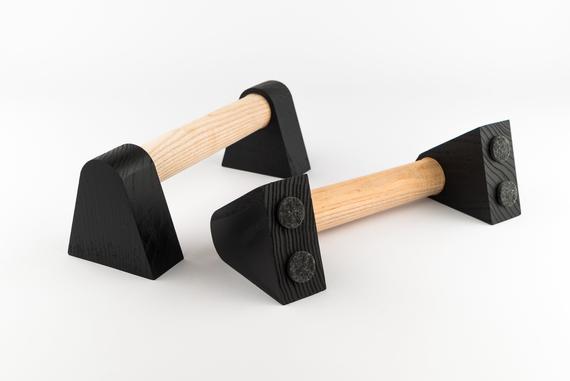
Ab exercises. Everyone loves doing them and in a traditional gym setting you will probably see people doing some variation of an ab exercise almost every day. You might even know some friends who do “300 crunches a day.” And yet, if I were to walk into a traditional gym setting and ask a show of hands of how many people have rock hard 6 packs, very few if any would go up. Why is that? Well, that’s because the rest of the world has strongly confused trunk flexion as the primary role of the abdominals.
In CrossFit, we perform the sit-up, not the crunch. Even more so, we perform the GHD sit-up, which as many of you learned this week, has the profound ability to make your abs sore with just a few reps. This leads us into the L-sit. Perform a few sets of a 15 second hold and the next day you will have a soreness to your abs like you’ve never felt before. But, how can that be? The trunk never “crunches” in either movement.
The primary role of the abdominals and the whole reason we perform and love exercises like the GHD sit-up and L-sit is because they invoke trunk stability, not trunk flexion. Most new athletes that come to CrossFit cannot perform a GHD sit-up due to the fact that they don’t have the ability to maintain midline stabilization as they go down and even less so as they come back up. Put a new athlete on the GHD for the first time and have them hold in parallel and they will either fall all the way down or begin to break at the low back and hit a gruesome lumbar hyperextension. The same can be said for the L-sit. Try having a new athlete hold this position on the parallettes and their chest and ribs will protrude forward in such a way. Trunk stability is paramount to be able to perform these movements. It’s also paramount to any other functional movement we may perform. Try performing a heavy front squat with your abs flexing and you’ll soon realize the benefit of incorporating the GHD sit-up and L-sit into your regimen.
The other reason we love these movements is their profound ability to develop capacity in the hip flexors. In CrossFit, and in life for that matter, there is a major skew towards opening the hip under load. Deadlifts, squats, cleans, snatches, picking up a child, or putting something into your car. We are constantly opening the hip under load. But, how many times are you closing the hip under load? Does it happen in the squat? Yes, but ask someone if their hip flexors have ever been sore after a heavy squat day and they’ll look at you with a “no, duh” face. The GHD sit-up and the L-sit are the only two movements in which we close the hip under load and they are vastly underutilized in traditional gym settings as well as most CrossFit gyms. A powerful hip flexor is essential to athletic performance in the olympic lifts. And, better olympic lifts will undoubtedly make you a better athlete.
To learn more about how your abs and hip flexors are strengthened in the gym and how that can help you in everyday life, come talk to us!
